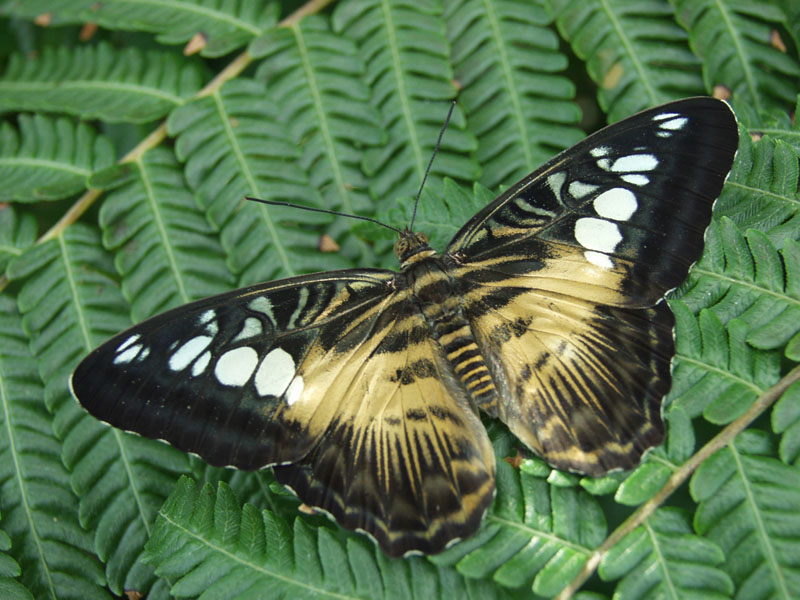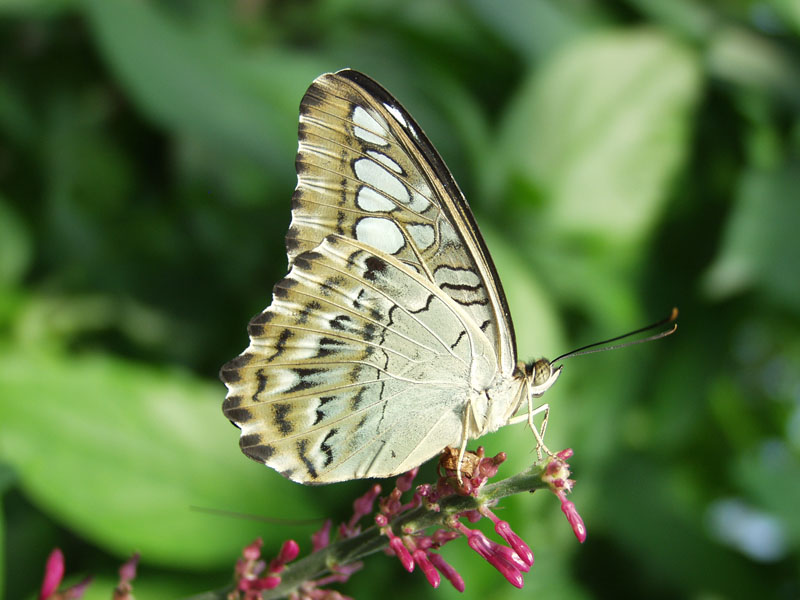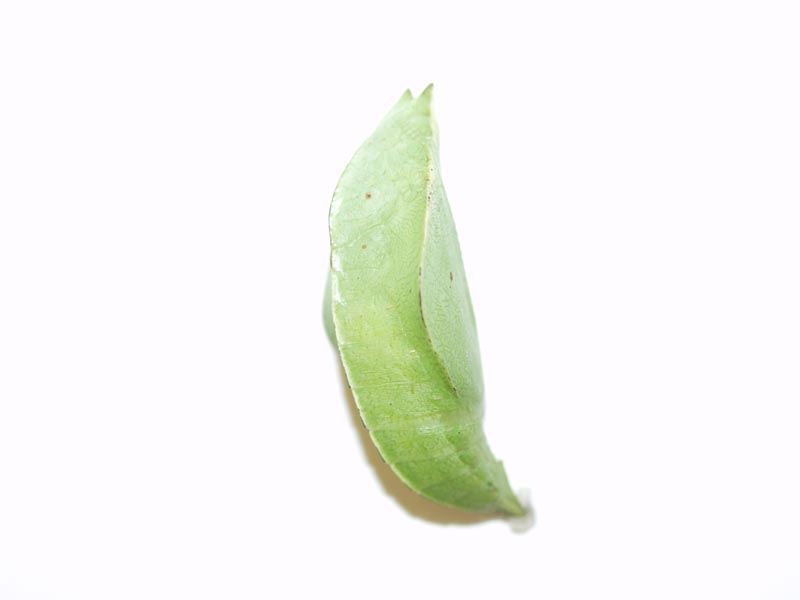


Adults will feed from a variety of flowers but they tend to prefer smaller flowers which makes Lantana one of their favorite nectar sources.
The genus Parthenos is Greek for virgin. The specie sylvia comes from the Latin word silva which means “wood or forest”.
The adults prefer open country sides but they can often be found flying through the tropical forest especially along the rivers and streams.
Adult Clippers are fairly strong flyers so it is possible for them to cover a fair amount of ground each day. After mating the females lay their eggs on the host plant. The colorful larva feeds on the host plant until it forms its chrysalis.
There are multiple generations each year making it possible to find adults throughout the year with the highest populations found from December through February.
The Clipper butterfly can be found in a variety of different colors such as blue, green, brown and gold. Each of these different color forms is considered to be a subspecie of Parthenos sylvia. The current understanding is a single population was separated by the formation of mountains and islands, which allowed the different colors to evolve in a particular area.